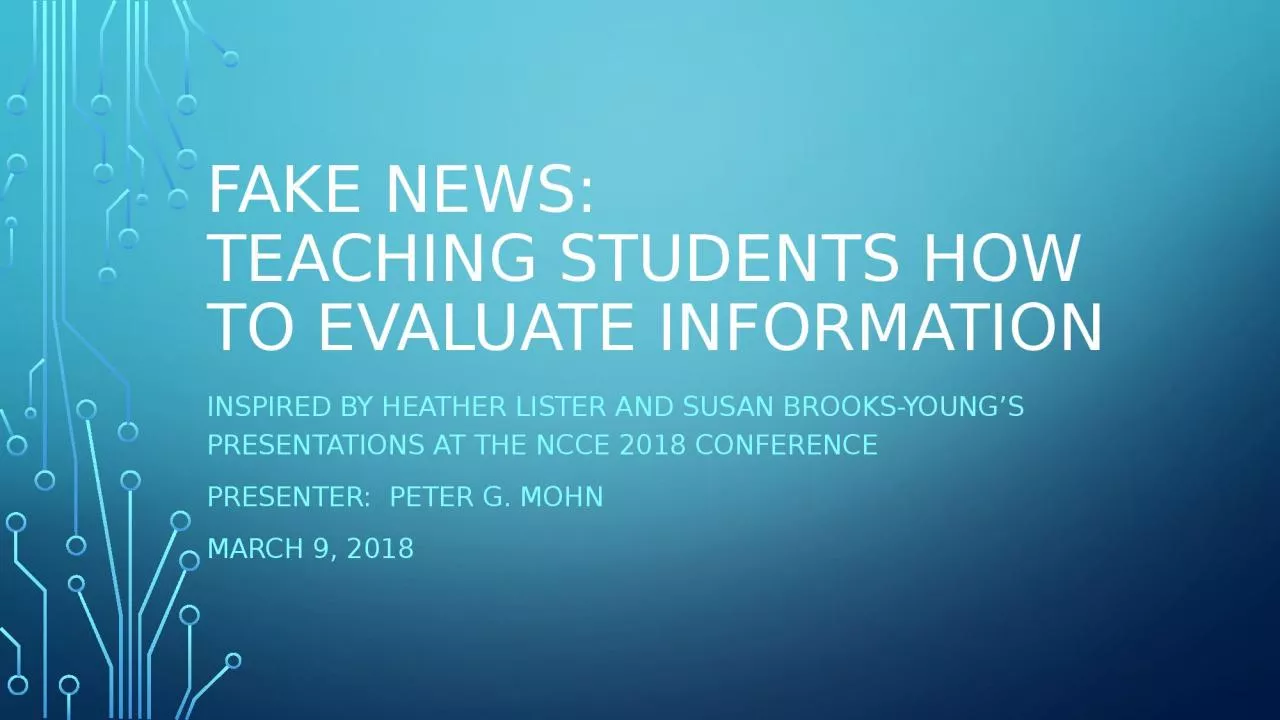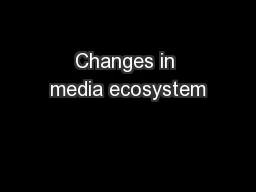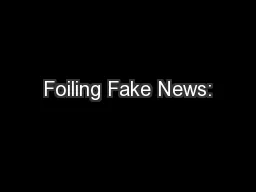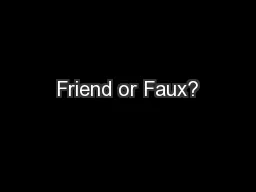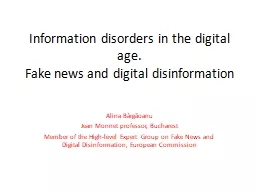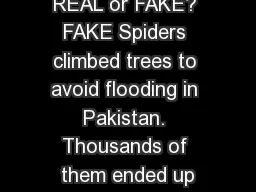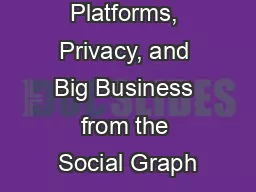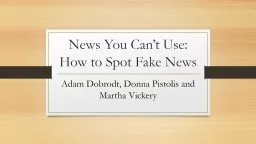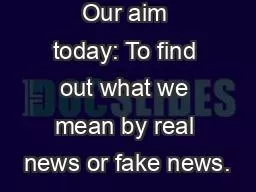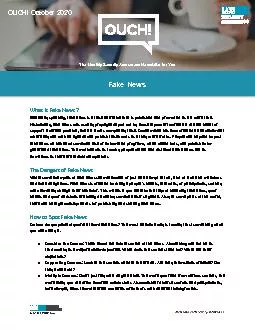PPT-Fake News: Teaching Students How to evaluate information
Author : newson | Published Date : 2020-08-28
Inspired by Heather Lister and susan Brooksyoungs presentations at the ncce 2018 conference Presenter Peter g mohn March 9 2018 Fake news spreads farther faster
Presentation Embed Code
Download Presentation
Download Presentation The PPT/PDF document "Fake News: Teaching Students How to eval..." is the property of its rightful owner. Permission is granted to download and print the materials on this website for personal, non-commercial use only, and to display it on your personal computer provided you do not modify the materials and that you retain all copyright notices contained in the materials. By downloading content from our website, you accept the terms of this agreement.
Fake News: Teaching Students How to evaluate information: Transcript
Download Rules Of Document
"Fake News: Teaching Students How to evaluate information"The content belongs to its owner. You may download and print it for personal use, without modification, and keep all copyright notices. By downloading, you agree to these terms.
Related Documents

